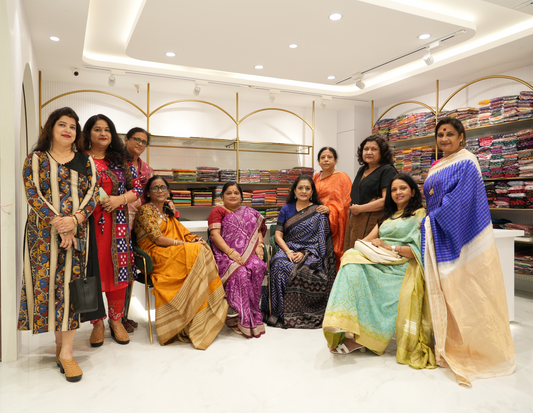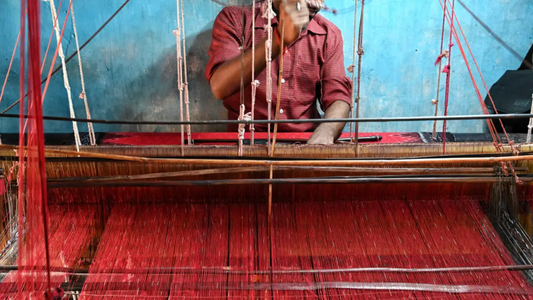
Exploring India is diversified adventure. Wandering through multifarious dances, cuisines; costumes, languages, andfolklore, tourist always take back emotions and memories. Along with these treasure experiences, most of them also carry a piece of traditional handloom. Thedivergence of tradition hasprocreated various handlooms throughout India. These creations of the craftsman have added the handloom “GOPALPUR TUSSAR” to the catalogue of artistry.

The vibrant and embellished Tussar Silk is a gift from medieval times. Amongst the varied worldwide silk, “Tussar” is an exception. Unlike other worms, the breed which produce “Tussar” are not fed to mulberry leaves. The TUSAAR Silk is called KOSA in Sanskrit and WILD SILK in common. These are not only used for handloom clothes rather were also used in various handicrafts as a base material. These desirable silks are found in countries like Japan, China, Sri Lanka and India. India is the 2nd largest and exclusive producer of TUSAAR. In India Tussar is exclusively produced by the Tribal. The tribal community of Gopalpur produces the finest of the Tussar. These silk being extremely peerless holds a GI tag since 2009.

This ancient craft is hitched with the times of Sri Chaitanya. He travelled all over the India to proliferate the principles of Bhakti movement and had the largest group of followers for that period. This Hindu scholar turned saint also had devotees from Guin and Gauda communities of West Bengal. This group of disciples stayed back in ODISHA and continued the Tussar weaving profession.
The title of the handloom is derived from the hub of its production Gopalpur village of JAJPUR. This weaving tales are drafted at the banks of Brahmani River since 16th century.

Amidst of crafting and drafting, the prints are weaved into this exotic and exclusive piece. The whirling of the tussar threads are mainly carried out by female craftsmen. They knot the ends of the warps. This is known as “TaniJodiba”which means joining ends. It typically takes four hours to join a 48 inchsaree. The warp is nicely combed and put into beam part by part.The threads are then winded to yarn on the wooden “natai” with a rhythmic speed. Ornamentation is browned to yield the “BANDHA” pattern. This embellishment adds preciousness to the fabric. The spinning wheel (CHARAKHA) is used for winding the thread.
The CUT SHUTTLE technique is done to weave and interlock the shuttles. These shuttles interlink on both sides give a gleaming look. After dying the fabrics with the tints like maroon, pink, red, plum etc the fabrics are designed with the weft and cut shuttle mechanism. This technique enhances the doodling on the fabric. The exclusivity of the handloom is from the kinds of fabric to blends of the yarns. These have led the handloom to pluck the GI tag in the year 2009.

The design of dhoti, scarves, shirting, stoles, joda, saree, chaddar all of these are designed in the Gopalpur Tussar. The interesting part of these handloom is the blends. The tussar is blend with cotton, eri silk and mulberry silk to make a beautiful yarn. The fishbone designs on the pallu and aanchal have been the highlighted and enticing detail. The pleasing yarns have got the most eye catching borders. They can be easily traced even at a jam-packed pomp. The lustrous and gleaming handloom also provides comfortable and breathable texture.
The stains of the artists are precisely seen from the intricate and polished work.There are struggles behind the polishing has started long back in the 90’s.The weavers were weaving cotton since 1972 but a cyclone arrived and turned their fate to destruction. The ruined homes and raw materials have taken their hope to a dark room of depression. When everything was at the lowest and cotton became expensive. Tussar were made at low cost and of superior quality when private entrepreneurs intervened the business. Overcoming these struggles this stands out to be the largest and leading clusters in India.
The more female assistance here has dedicated more strength to the groups. This has also made them independent and empowered. The financial assistance and reverence are too little for the hours of rhythmic hours of diligence. The Geographical Indication falls short for the craftsman’s and their families to get their basic needs. Measures to provide a better level of wage is essential to preserve this artistry.











